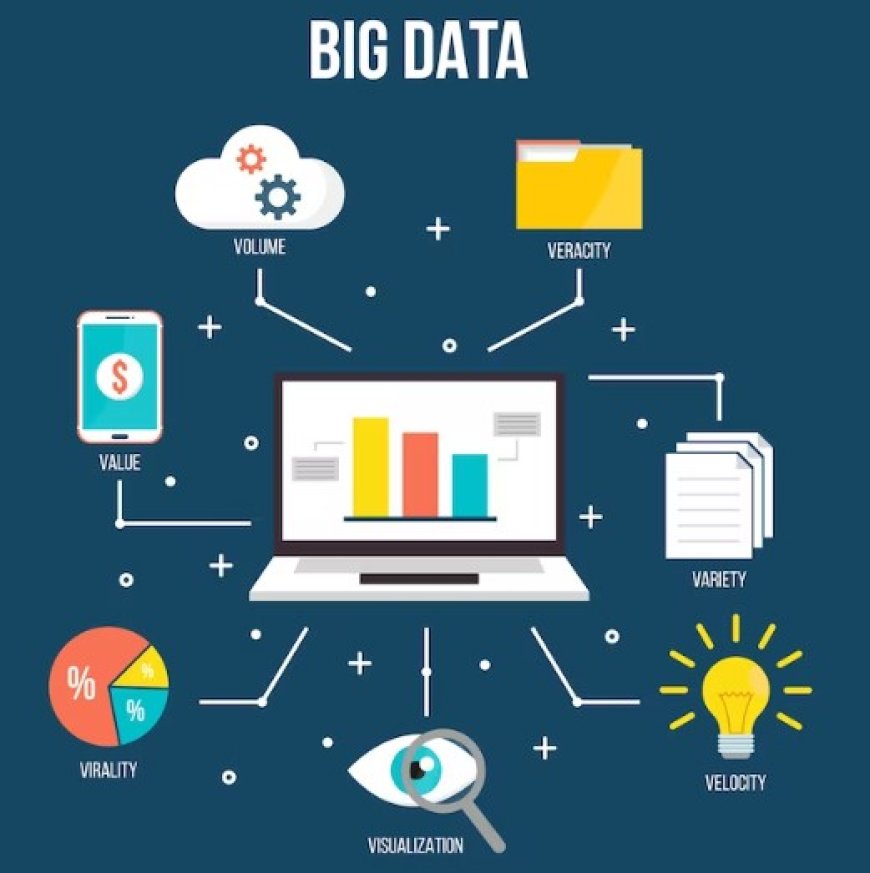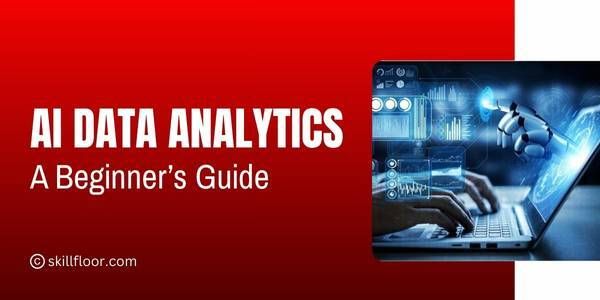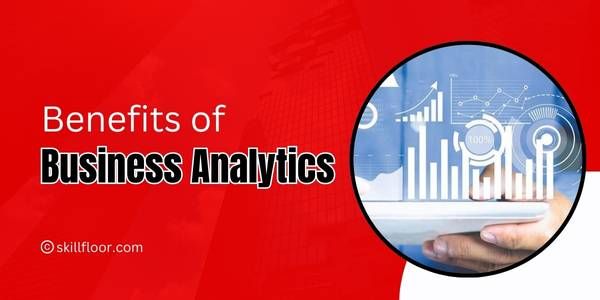Big Data Techniques: Data in a Connected World
The future of data analytics in a connected world. Explore Big Data techniques and unlock valuable insights for your business.

In today's digital age, the amount of data generated and collected is growing at an unprecedented rate. This surge of data, known as big data, presents both challenges and opportunities for businesses and organizations across various sectors. To make sense of this vast amount of information and extract valuable insights, specialized techniques and tools are required. We will explore the fascinating world of big data techniques and how they are revolutionizing the way we analyze and utilize data. From data storage and processing to data mining and predictive data analytics, we will delve into the key techniques that enable us to harness the power of big data.
Data Storage and Infrastructure
The first step in handling big data is ensuring proper data storage and infrastructure. Traditional databases and storage systems often struggle to handle the volume, variety, and velocity of big data. This has led to the emergence of specialized technologies such as distributed file systems and NoSQL databases. These solutions enable the storage and retrieval of massive amounts of dta across multiple servers, ensuring scalability, fault-tolerance, and high availability.
Data Processing and Batch Analytics
Once the data is stored, the next challenge is processing and analyzing it efficiently. Big data processing techniques, such as MapReduce and Apache Hadoop, allow for distributed processing of large datasets across clusters of computers. These frameworks break down complex tasks into smaller subtasks that can be processed in parallel, significantly reducing the processing time. Batch analytics techniques enable the analysis of vast amounts of historical data to derive insights, identify patterns, and make data-driven decisions.
Real-time Stream Processing
As data continues to flow in real-time from various sources such as sensors, social media, and IoT devices, the need for real-time stream processing has become crucial. Technologies like Apache Kafka and Apache Storm enable the processing and analysis of data streams as they are generated. Stream processing techniques allow organizations to gain instant insights, detect anomalies, and respond to events in real-time, opening up opportunities for applications like fraud detection, real-time monitoring, and predictive maintenance.
Data Mining and Machine Learning
Data mining techniques play a vital role in extracting meaningful patterns and knowledge from large datasets. Machine learning algorithms, such as decision trees, clustering, and classification, are used to uncover hidden relationships and make predictions. These techniques enable businesses to gain valuable insights, understand customer behavior, optimize processes, and drive informed decision-making. The availability of big data has further fueled the development and application of advanced machine learning models, such as deep learning, which can handle complex patterns and unstructured data.
Predictive Analytics and Data Visualization
Predictive analytics leverages big data techniques to forecast future outcomes based on historical data patterns. By applying statistical models, machine learning algorithms, and data visualization tools, organizations can gain insights into future trends, customer preferences, and market dynamics. Data visualization techniques, such as interactive dashboards and visual representations, enable decision-makers to understand complex data easily and communicate insights effectively.
Data Integration and Data Wrangling
Big data often originates from various sources and is available in different formats and structures. Data integration and data wrangling techniques enable the combination and transformation of disparate data sources into a unified format for analysis. These techniques involve cleaning, filtering, and transforming data to ensure consistency and quality. By integrating data from multiple sources, organizations can obtain a comprehensive view of their operations, customers, and market trends, leading to better-informed decisions.
Text and Sentiment Analysis
With the proliferation of text-based data from social media, customer reviews, and online content, text and sentiment analysis techniques have gained significant importance. Natural Language Processing (NLP) algorithms, combined with machine learning, enable the extraction of meaning and sentiment from textual data. Organizations can analyze customer feedback, sentiment on social media, and textual data from various sources to gain insights into customer preferences, product sentiment, and market trends. These techniques help businesses make data-driven decisions, enhance customer satisfaction, and identify potential risks or opportunities.
Data Privacy and Security
As big data contains sensitive and personal information, ensuring data privacy and security is of utmost importance. Encryption techniques, access controls, and secure data storage mechanisms help protect data from unauthorized access or breaches. Additionally, data anonymization techniques can be applied to protect individual identities while still allowing for analysis. Compliance with data protection regulations, such as GDPR or HIPAA, is essential to maintain trust with customers and stakeholders and avoid legal repercussions.
Edge Computing and Internet of Things (IoT)
As the number of IoT devices continues to grow, edge computing has become essential for processing and analyzing data at the device level. Edge computing techniques enable real-time analysis and decision-making at the edge of the network, reducing latency and bandwidth usage. This is particularly useful in applications such as smart cities, industrial IoT, and autonomous vehicles, where real-time insights and quick response times are critical.
Cloud Computing and Big Data Analytics
Cloud computing platforms provide scalable and cost-effective solutions for big data storage, processing, and analytics. Cloud-based services, such as Amazon Web Services (AWS) and Microsoft Azure, offer a wide range of tools and services for big data analytics. These platforms provide on-demand resources, eliminating the need for organizations to invest in expensive infrastructure and allowing them to focus on extracting insights from their data.
Data Governance and Ethics
As the volume and complexity of data increase, ensuring data governance and ethical practices becomes crucial. Data governance frameworks define policies, processes, and responsibilities for data management, including data quality, data ownership, and data lifecycle management. Ethical considerations, such as fairness, transparency, and bias mitigation, need to be incorporated into the design and deployment of big data techniques to maintain trust and avoid unintended consequences. Adhering to ethical guidelines and regulatory requirements is essential for responsible data usage.
Continuous Learning and Adaptation
The field of big data is constantly evolving, with new technologies, algorithms, and techniques emerging regularly. To stay ahead, organizations and data professionals need to embrace a culture of continuous learning and adaptation. This involves keeping up with the latest trends, attending industry conferences, participating in online communities, and exploring new tools and methodologies. Continuous learning ensures that organizations can leverage the full potential of big data techniques and adapt to changing business needs and technological advancements.
Impact on Industries and Society
The application of big data techniques has transformed various industries, including healthcare, finance, retail, and transportation. In healthcare, for example, big data analytics has enabled personalized medicine, disease prediction, and improved patient outcomes. In finance, data analytics has revolutionized risk management, fraud detection, and customer profiling. The impact of big data extends beyond individual industries, as it plays a vital role in solving societal challenges, such as climate change, urban planning, and public health.
Big data techniques have transformed the way organizations handle and leverage data. From data collection and storage to processing, analysis, and visualization, these techniques enable businesses to extract valuable insights and make data-driven decisions. The evolution of big data technologies has paved the way for advanced analytics, machine learning, and artificial intelligence, empowering organizations to uncover patterns, trends, and correlations within vast and complex datasets.
Taking everythng in the account, Data integration and cleaning techniques ensure data consistency and quality, while statistical analysis and data visualization aid in understanding and communicating complex information effectively. Additionally, the advent of big data has led to the development of specialized tools and platforms for distributed computing, such as Hadoop and Spark, enabling efficient processing of large-scale datasets.
Ethical considerations, such as data privacy, security, and fairness, must be incorporated into big data practices to ensure responsible and accountable data usage. Organizations should adhere to data governance frameworks, comply with regulations, and implement robust security measures to protect sensitive information and maintain public trust.


























































